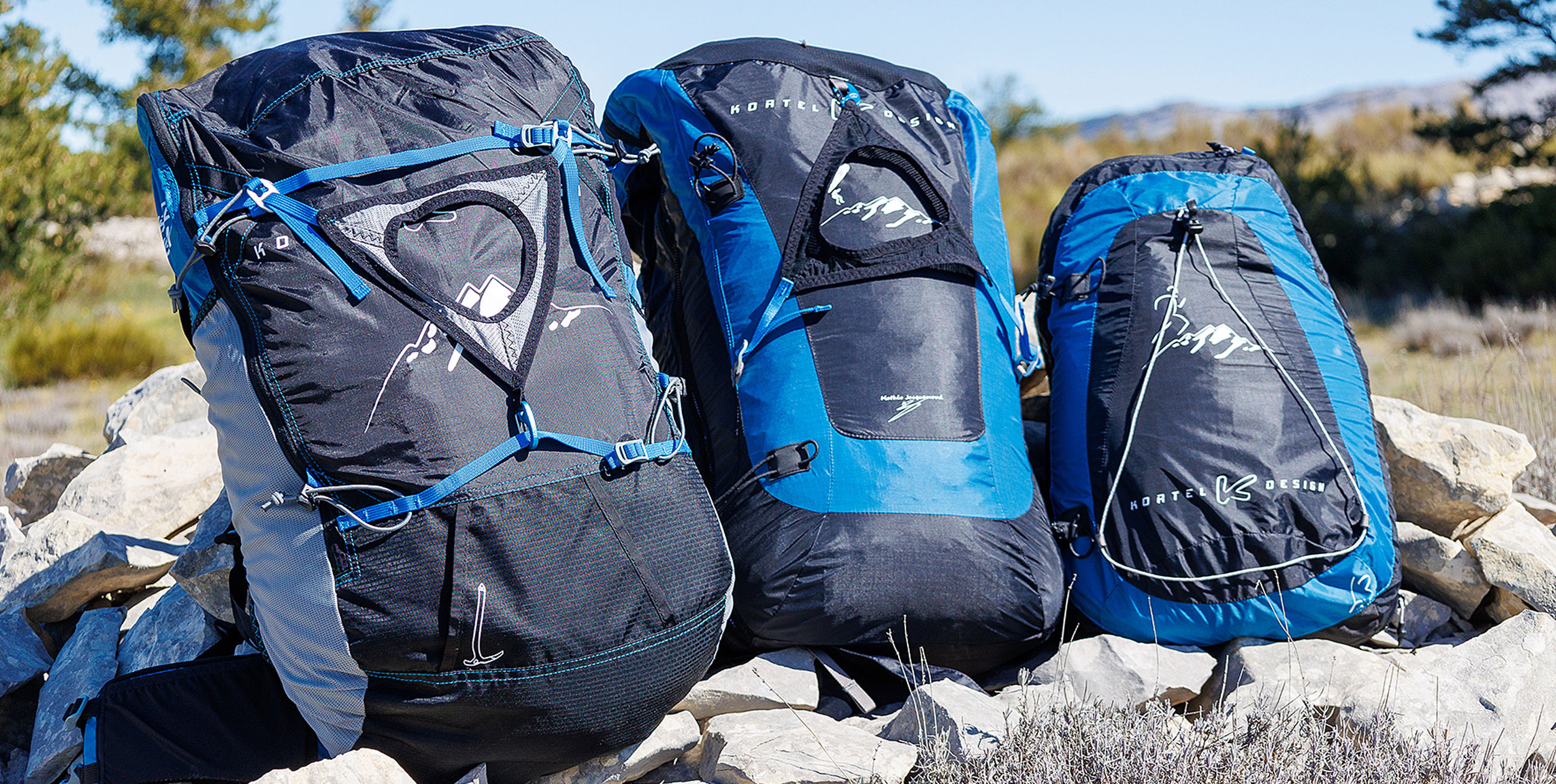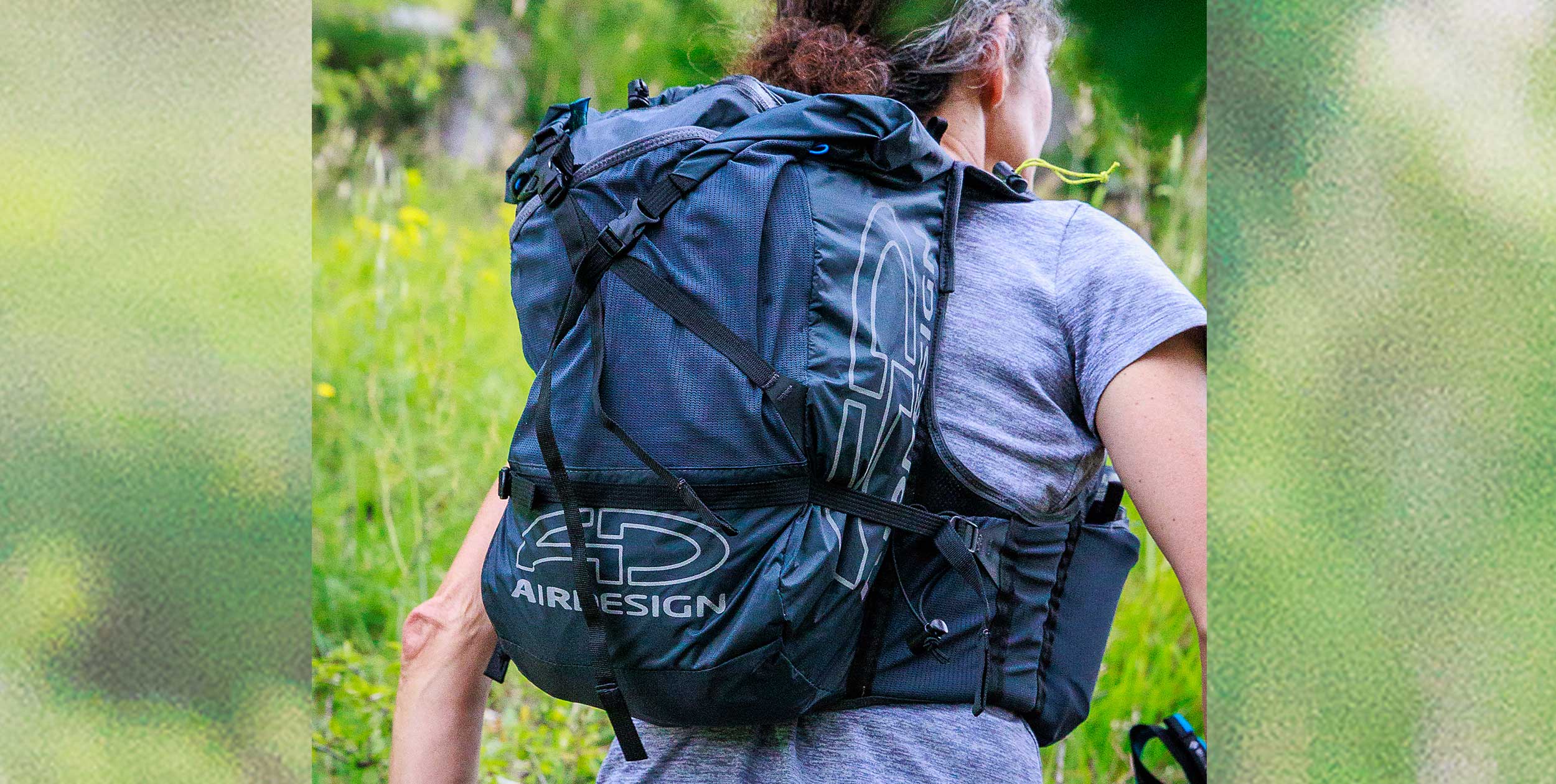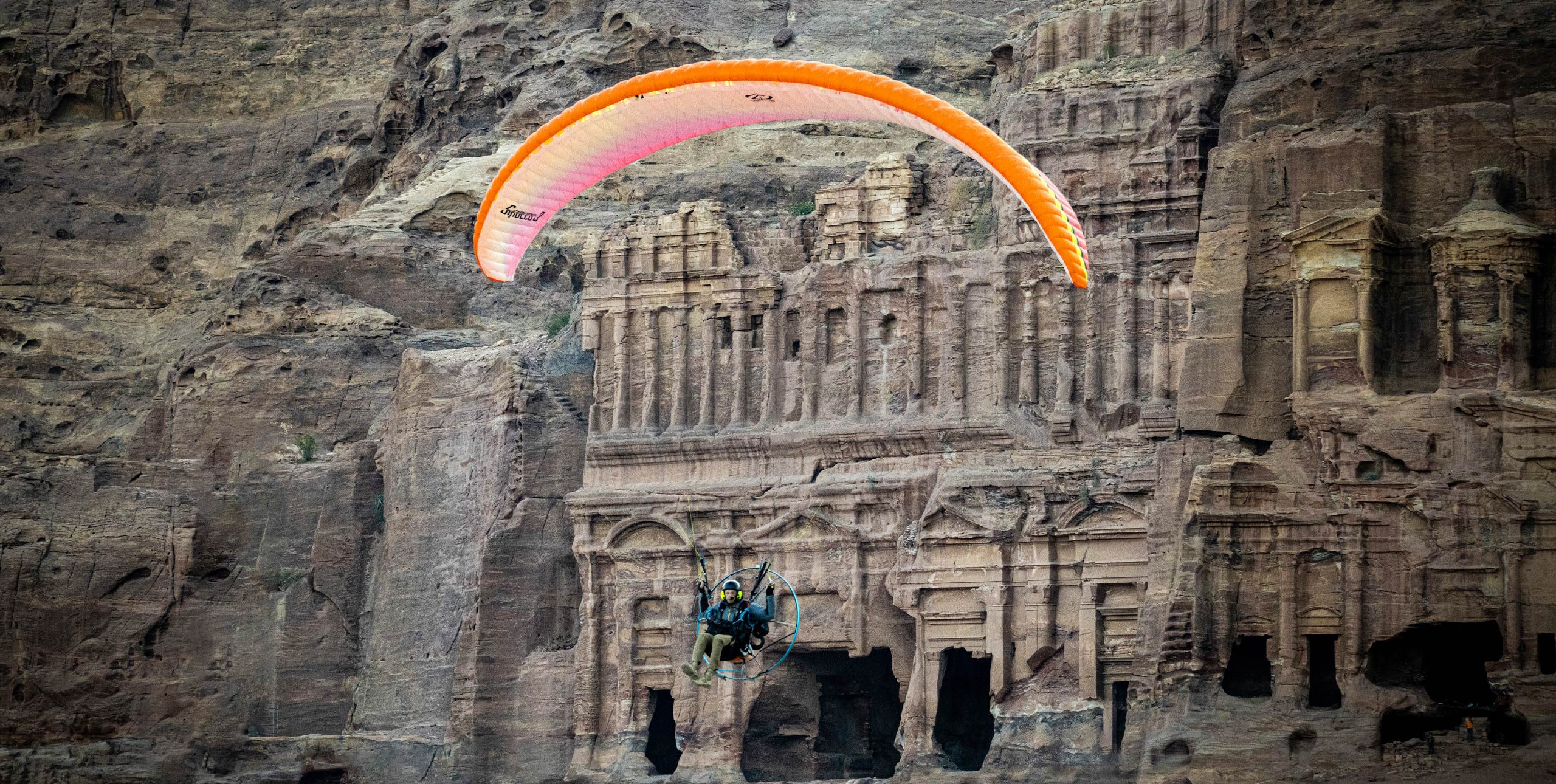
Kortel make a wide array of lightweight bags for paragliding. Charlie King tries the smallest three.
If you’re looking for something to carry your lightweight paragliding kit, you are absolutely spoiled for choice. Long gone are the days where you had to “make do” with a sack-of-potatoes glider bag or a rucksack designed for something other than loading a paraglider into. Today, there is a specialist piece of kit for everything – and that includes what you pack your flying gear into.
Kortel are based in the foothills of Mont Blanc, so they have the perfect testing ground for their mountain flying harnesses, rucksacks and accessories. They also have a dream team of pilots and athletes on board, including top ski-mountaineering athlete and trail runner turned pilot Laetitia Roux who helped design the K17; and skier and mountain guide Mathéo Jacquemoud who worked on the K27.
Going ultra lightweight
We wanted to test equipment for hike-and-fly and run-and-fly, rather than vol-biv, so were interested in their smaller volume rucksacks. Glider-wise we used an 18m² BGD Kiss (double surface), and a single-surface 18m2 AirDesign UFO, which we packed with the minimum of a string-style harness, helmet, light jacket and gloves.
Kortel sent us three bags: the K17, K27 and K40, the number being the volume they carry, in litres. Overall we discovered three excellent bags, well built and well thought-out with a lot of attention to detail. The right one for you will of course depend on the volume of your equipment and the activities you plan to do with it.
If you want to run, you will definitely be better with one of the more stable vest-style bags (the K17 will fit a single-skinner, K27 is probably the better fit otherwise), but they are more limited in terms of stowage options.
If you want to head out for a day’s hike not run, with some longer trips or ascents that need more clothing, maybe a rope, then the K40 is the obvious choice.
The options don’t stop with K40 – there are 60 and 80 litre versions too, but that’s getting more into vol-biv territory.

K17: Run-and-fly
The K17 is designed for running with a single-surface wing, designed in collaboration with Laetitia Roux who uses it with her Dudek Run&Fly. It’s built around a trail-running style stretchy vest that keeps it stable, further assisted by a lightweight stowable waist strap.
Clever adjusters on the front and side mean you can tailor the fit to your body shape. You can carry drinks in two soft-flask holders up front, but there is no room or exit-hole for a drinks bladder system inside, so you’re limited to a litre or so of water. Under the softflask pockets are stretchy pockets that you could put snack bars, a phone, buff or gloves in where they are accessible on the go.

Inside is a half-length concertina-packing bag that keeps your kit neat and holds it in place inside. It’s effective and easy to pack into. The internal folding bag has three mesh pockets, one zipped, for small items, and you can easily fit in a lightweight jacket.
There is no room for a helmet inside, but there is a helmet-holder system on the outside, with a tether to ensure you don’t lose it. Our Supair Pilot helmet fitted in, but I did find it bumped a bit as I ran, and once or twice it bounced itself out of the holder. A lower-profile climbing or cycling style helmet would probably not have this problem, but of course would not be certified. The K17 weighed 345g on our scales.
[promobox]

K27: Hike-and-fly
The extra volume of the K27 means you can pack a double-surface wing. It still has the trail-running vest-style system, and is teardrop shaped like the K17 but upside-down, to keep the weight high.
Like the K17, the vest is adjustable and well fitting and it has a stowable waist strap which really helps stabilise the pack. You can still run with it, but I find that the larger the load, the less appealing running is, and it’s better suited to hiking.
For this it is really very comfortable and amazingly stable. Because it’s bigger than the K17, the bag sits higher behind your neck, and has straps to pull the load in close. There are soft-flask pouches and elasticated pockets on each shoulder strap, similar to the K17’s and the same as you would find on a trail running pack.

Like the K17, the K27 unzips all the way round and opens out completely to reveal a concertina-folding bag inside. Because the rucksack is larger, the concertina bag does not occupy all of the space inside. It has been stitched at one end, so when the bag is folded up it leaves a space which you can fit your helmet and other bits in. (I think it could be even better to “change ends”, so that when folded, the helmet space is to the outside of the bag and the glider against your back rather than vice versa, which would be more comfortable). If you fill this space you can still stow your helmet on the outside thanks to the removable helmet holder. As with the K17 this is nicely shaped with three attachment points and a mini karabiner at the top. There are also walking-pole holder elastics on the outside. Weighs 440g including 20g helmet holder.

K40: Mountain days
The K40 is a more standard-shaped rucksack, with traditional rucksack straps instead of the stretchy vest. It’s light but tough, designed for the mountains, and is the most versatile of the three. The carry system comprises well shaped and padded shoulder and hip straps, with a perforated and mesh-covered back and good lumbar padding. There is a section of waterproof fabric on the inside, to protect the contents of your bag from sweat.
The K40 has an L-shaped zip. It opens up wide so it’s easy to load your glider in, but without opening out completely like the other two, and it does not have the concertina folding bag inside.

It’s designed for the mountains, with enough volume to fit a lightweight glider plus plenty of warm clothing and maybe a rope or light sleeping bag, making it suitable for mountain adventures from summits to mini vol-bivs. There is a drinks tube routing so you can carry a drinks pouch. The big stretchy side pockets are perfect for stuffing a down jacket into, or for water bottles. They have additional lower access holes to facilitate getting a bottle in and out on the go.
For additional storage, there are pockets on each side of the waist belt: one zipped, one stretchy and perfect for a phone, and a small zipped pocket high up on one of the sides. There are two sets of pole holders, and a wide loop to slip an ice axe into. But this bag is not just for the mountains. It’s perfect for your everyday hike-and-fly with minimal kit too. The bag is very light – we measured 600g – and there are compression straps on the front to neaten up a smaller load if necessary.

First published in issue 236











